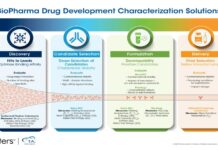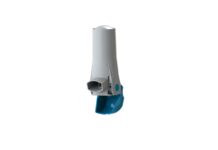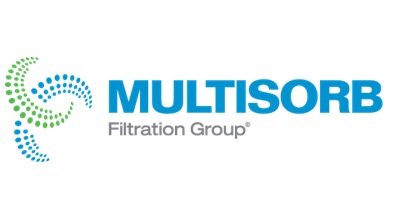Scaling up production in the pharmaceutical industry is crucial for transitioning novel therapies from laboratory-scale development to large-scale manufacturing. This phase is essential for bringing life-saving medications to market, but it presents numerous technical, operational, and regulatory challenges. Addressing these challenges requires a systematic approach, incorporating process optimization, regulatory compliance, and cross-functional collaboration. In this article, we explore the primary challenges in scale-up production and strategies to mitigate them.
Challenges in Scale-Up Production
1. Process Optimization and Reproducibility
One of the most significant challenges during scale-up is ensuring that processes optimized at the laboratory or pilot scale remain consistent when scaled up. Variations in equipment, material properties, and process dynamics can lead to product inconsistencies. For example, mixing efficiency, heat transfer, and mass transfer often differ between small and large vessels, potentially compromising product quality and yield.
To overcome these issues, it is essential to thoroughly understand the fundamental processes and their impact on product characteristics. The application of Process Analytical Technology (PAT) can help monitor critical parameters in real-time, ensuring that any deviations are detected early1.
2. Regulatory Compliance
Pharmaceutical manufacturing is highly regulated, and scaling up production introduces additional complexities in meeting regulatory standards. Regulatory agencies such as the FDA and EMA require manufacturers to adhere to Good Manufacturing Practices (GMP) throughout the scale-up process. Demonstrating equivalence between laboratory-scale processes and large-scale operations is vital for regulatory approval.
A proactive approach to compliance includes early engagement with regulatory bodies to clarify expectations, conduct extensive documentation, and use a Quality by Design (QbD) framework. QbD emphasizes the importance of understanding and controlling the manufacturing process to ensure product quality2.
3. Supply Chain Management
Scaling up production places a strain on the supply chain. As production volumes increase, so does the demand for raw materials, intermediates, and packaging. Variability in the quality of these materials can disrupt manufacturing processes, while sourcing issues can delay production timelines. Additionally, managing inventory levels to ensure a steady supply of materials without overstocking is complex.
To address these challenges, manufacturers can build strong relationships with suppliers and diversify their sourcing options. Implementing supply chain management tools and analytics can help optimize material procurement and reduce risks associated with material shortages3.
4. Cost Control
The capital-intensive nature of scaling up production presents significant financial challenges. Expenses related to procuring larger equipment, expanding facilities, and hiring skilled personnel can strain budgets. Additionally, inefficiencies during the scale-up process can lead to higher operational costs, affecting the product’s profitability.
To control costs, manufacturers should optimize production processes through Lean manufacturing principles. These include reducing waste, enhancing efficiency, and improving yield. Modeling and forecasting potential costs during the early stages of scale-up can also help identify areas for improvement1.
5. Technology Transfer
Effective technology transfer from R&D to manufacturing is critical for a successful scale-up. Miscommunication or misalignment between teams can lead to errors, delays, and inconsistencies in product quality. Clear documentation, standardized procedures, and robust training programs are essential to ensure smooth technology transfer.
Standard operating procedures (SOPs) and pilot-scale testing provide valuable insights and reduce risks during the transfer. Continuous communication and collaboration across R&D, production, and quality assurance teams are key to ensuring alignment and successful scale-up.
Strategies to Overcome Challenges
1. Implementing Quality by Design (QbD)
Quality by Design (QbD) is an essential strategy for addressing challenges in scale-up production. QbD involves designing processes that are robust and reliable, ensuring consistent product quality from the start. By identifying critical quality attributes (CQAs) and critical process parameters (CPPs) early in the development phase, manufacturers can mitigate potential risks and prevent issues during scale-up. Additionally, QbD provides a scientific basis for regulatory submissions, making it easier to demonstrate equivalence between laboratory and commercial-scale operations1.
2. Utilizing Advanced Analytical Tools
The integration of advanced analytical tools such as Process Analytical Technology (PAT) enhances the scale-up process. PAT allows for real-time monitoring of process variables, offering valuable insights into process performance. With these tools, manufacturers can detect any deviations early and take corrective action to ensure consistent product quality. PAT, in combination with other analytical techniques such as near-infrared (NIR) spectroscopy, can help optimize the scale-up process and improve reproducibility3.
3. Pilot-Scale Testing
Conducting pilot-scale studies is critical for identifying and addressing challenges before full-scale production begins. Pilot-scale testing allows manufacturers to simulate real-world production conditions and assess how the process will perform at a larger scale. It also provides an opportunity to evaluate equipment performance, identify potential bottlenecks, and test raw materials under conditions that resemble commercial operations.
Data gathered from pilot-scale testing can inform decisions regarding process optimization, equipment selection, and risk management strategies, making it an invaluable tool for ensuring a smooth scale-up transition.
4. Collaboration and Communication
Effective communication and collaboration between R&D, manufacturing, and quality assurance teams are essential to overcoming scale-up challenges. Misalignment between these departments can lead to errors that affect product quality and manufacturing efficiency. Regular cross-functional meetings, shared objectives, and joint training sessions help ensure all teams are aligned and working toward common goals.
Additionally, collaboration with external partners, such as contract manufacturing organizations (CMOs), can provide specialized expertise and additional resources to manage the complexities of scale-up production.
5. Leveraging Digital Technologies
Digital technologies such as artificial intelligence (AI), machine learning (ML), and digital twins are transforming the pharmaceutical industry. These tools can optimize manufacturing processes by simulating scale-up scenarios and predicting outcomes. Digital twins, for example, create virtual models of the manufacturing process, allowing manufacturers to test and refine their operations before implementing changes in real production environments.
AI and ML can also analyze large datasets to identify patterns, predict process behaviors, and suggest process adjustments, significantly reducing the time and cost associated with scaling up.
6. Strengthening Supply Chain Resilience
Supply chain disruptions are a significant risk when scaling up production. To address this, manufacturers should establish strong relationships with suppliers and diversify their sourcing options to avoid dependence on a single supplier. Implementing a proactive supply chain management strategy that includes rigorous quality control measures for incoming materials is also essential.
Supply chain analytics tools can help optimize inventory management, forecast demand, and anticipate supply chain issues before they arise, ensuring a steady flow of materials to meet production needs.
Case Study: A Successful Scale-Up
The rapid development and production of mRNA-based COVID-19 vaccines offer a compelling example of successful scale-up production. Manufacturers faced immense challenges in scaling up production to meet global demand. However, through the application of QbD principles, advanced bioreactor technologies, and close collaboration with regulatory agencies, companies were able to rapidly scale up production without compromising product quality.
This success highlights the importance of innovation, regulatory collaboration, and technological advancement in overcoming scale-up challenges. It also demonstrates how flexibility and collaboration across the pharmaceutical industry can address unforeseen challenges and deliver essential products to market quickly.
Conclusion
Scaling up production in the pharmaceutical industry is an intricate process that requires a multidisciplinary approach to address the technical, operational, and regulatory challenges involved. By implementing strategies such as QbD, advanced analytics, and digital technologies, manufacturers can navigate these challenges and scale up efficiently. The success of the COVID-19 vaccine production exemplifies the potential for innovation and cross-sector collaboration in overcoming scale-up barriers. Continued advancements in these areas will be critical in ensuring the availability of high-quality medicines and therapies for patients worldwide.
References
- Rathore, A. S., & Winkle, H. (2009). Quality by Design for Biopharmaceuticals. Nature Biotechnology, 27(1), 26-34.
- U.S. Food and Drug Administration (FDA). (2011). Guidance for Industry: Process Validation: General Principles and Practices. Retrieved from https://www.fda.gov/media/71021/download
- Allmendinger, R., et al. (2014). Advanced Process Control in Pharmaceutical Manufacturing. Journal of Pharmaceutical Sciences, 103(10), 2982-2993.
- European Medicines Agency (EMA). (2022). GMP Requirements for Active Pharmaceutical Ingredients. Retrieved from https://www.ema.europa.eu
- Kulkarni, A., & Sawant, K. (2021). Scale-Up Challenges and Opportunities in mRNA Vaccine Production. Bioprocess International, 19(4), 34-38.






















